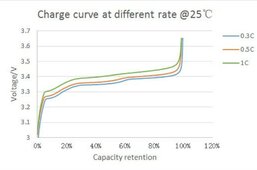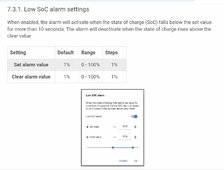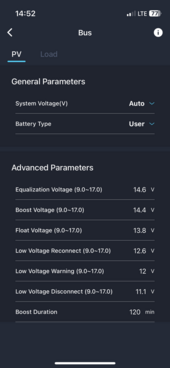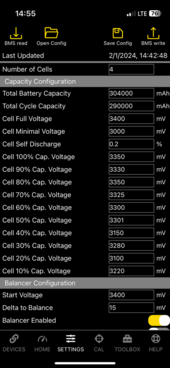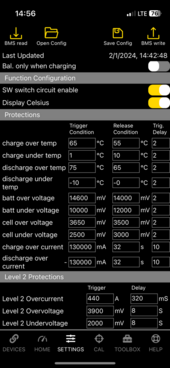Looks normal, the battery is still accepting a small charge current.
30 amps into a 300Ah battery , (charging at 0.1 C), will have achieved full charge by the time the battery reaches 14.0 volts. Note the graph shows cell volts under charge , with a low charge current full charge is reached as the cell approaches 3.5 volts, 14.0 for a 4 cell battery. Once the charge voltage is removed the battery volts will be in the region of 13.4 volts at rest.
View attachment 192693
No, the shunt connects between battery negative and negative buss bar, recommend Victron Smart shunt, or the Victron BMV712.
View attachment 192697
The battery reached 13.97 volts and all the cells exceeded 3.4 volts, that's a full battery. If you lower the charge voltage to 13.90 volts or slightly lower, with a long absorbtion period, the cells will better balance over time with the BMS balancer. It's not critical, so carry on using the battery as normal.
The Victron BMV712 shunt with programmable internal relay could activate an alarm at a SOC or voltage level.
View attachment 192706
Personally I am not a fan of active balance circuits but if added should perform better than the BMS. Your battery inbalance is not too serious and is typical of ready built battery, (I know yours is diy). With suitable charge voltages and extended absorbtion, your BMS should have an effect. It's worth trying for a few weeks before taking alternative action.
I think you have a Renogy Rover solar controller, its default setting for lithium is not ideal. I suggest user setting a charge and float voltage of 13.8 volts, try this for a week or two and see if the balance improves.
Mike



